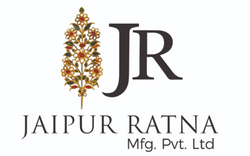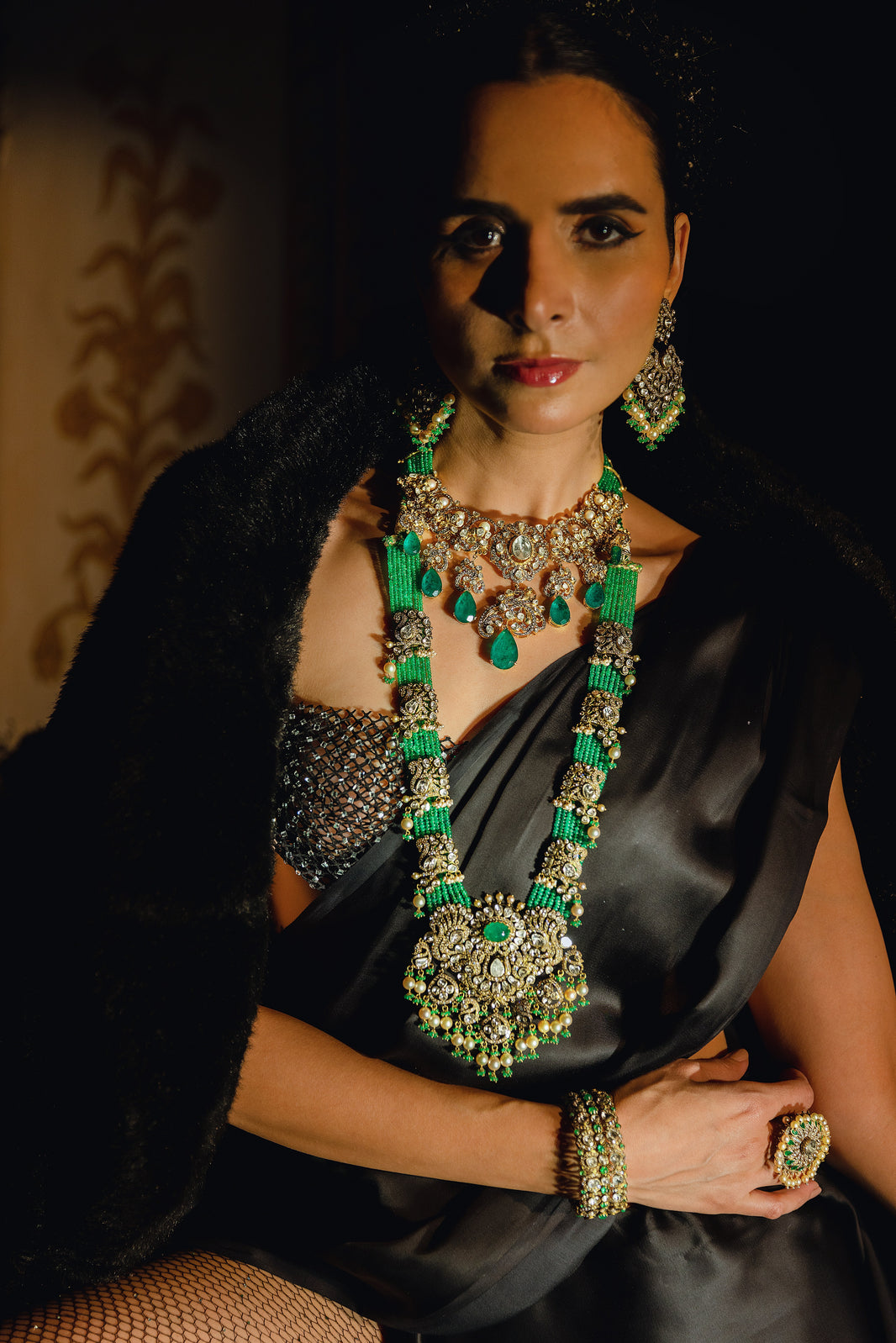Polki wedding jewellery has been a timeless part of Indian bridal fashion for centuries. Brides who choose Polki on their wedding day carry with them the legacy of uncut diamonds, traditional craftsmanship, and regal beauty. Unlike modern diamond jewellery that focuses on perfect cuts and brilliance, Polki celebrates the raw, unpolished glow of natural diamonds. a look that is both vintage and royal.
What Is Polki Wedding Jewellery?

Polki wedding jewellery is crafted with uncut natural diamonds set in gold using the ancient Jadau technique. The back of the jewellery is often finished with colourful meenakari work, which reflects the artistry of skilled craftsmen from Jaipur, Bikaner, and Hyderabad. Because Polki uses natural diamonds in their raw form, every piece is unique and carries a subtle, earthy brilliance that cannot be replicated by cut stones.
Why Brides Choose Polki Wedding Jewellery

-
Royal heritage: Originating during the Mughal era, Polki is associated with royal courts and Rajput queens.
-
Distinctive sparkle: The raw finish of uncut diamonds gives a softer, natural shine compared to faceted diamonds.
-
Perfect for heirlooms: Polki wedding jewellery is made with gold and real diamonds, making it an investment that can be passed down generations.
-
Cultural symbolism: In Indian weddings, Polki represents prosperity, grace, and timeless tradition.
Types of Polki Wedding Jewellery for Brides

-
Necklaces & Chokers – Bridal chokers with Polki diamonds layered with pearls or emerald drops.
-
Rani Haars – Long necklaces paired with chokers for a grand, multi-layered bridal look.
-
Earrings – Chandbalis, jhumkas, and danglers in Polki are perfect for mehendi, sangeet, and wedding ceremonies.
-
Maang Tikka & Matha Patti – Bridal forehead accessories that add elegance to hairstyles.
-
Naths (Nose Rings) – Oversized Polki naths complete a traditional bridal ensemble.
-
Bangles & Kadas – Wide Polki bangles studded with diamonds for a regal wrist look.
-
Haathphool & Rings – Intricate hand harnesses and statement rings crafted in Polki style.
Styling Ideas for Polki Wedding Jewellery

-
With Bridal Lehengas: Heavy Polki chokers with gemstone detailing enhance embroidered lehengas.
-
With Sarees: Long Polki rani haars paired with silk or banarasi sarees create a royal effect.
-
For Receptions: Lightweight Polki jewellery with pastel meenakari suits Indo-western gowns.
-
Layering Tip: Combine chokers with long necklaces for added depth, balancing the bridal attire with jewellery.
Polki Wedding Jewellery vs Kundan & Diamond Jewellery

-
Polki vs Kundan: Polki uses uncut natural diamonds, while Kundan is made with glass stones set in gold foil. Polki is more valuable and heavier.
-
Polki vs Diamond: Diamonds are cut and faceted for brilliance, while Polki has a raw glow, making it the preferred choice for traditional brides.
-
Polki vs Jadau: Jadau is the setting technique, while Polki refers to the uncut diamond stones used within it.
Price of Polki Wedding Jewellery

The price of Polki jewellery depends on:
-
Diamond quality: Size, clarity, and natural inclusions.
-
Gold purity: 22k and 24k gold bases increase value.
-
Artisan work: Handcrafted Jadau settings and meenakari increase labour cost.
-
Design scale: Bridal sets with multiple layers or gemstones are higher priced.
A bridal Polki set can range anywhere from ₹3 lakhs to ₹30 lakhs or more, depending on design and craftsmanship.
Care & Maintenance of Polki Wedding Jewellery
-
Always store each piece in individual soft pouches to avoid scratches.
-
Keep away from perfumes and hairsprays to protect meenakari and gold foiling.
-
Wipe gently with a soft cloth after wearing.
Take jewellery for professional cleaning before storing long-term.


